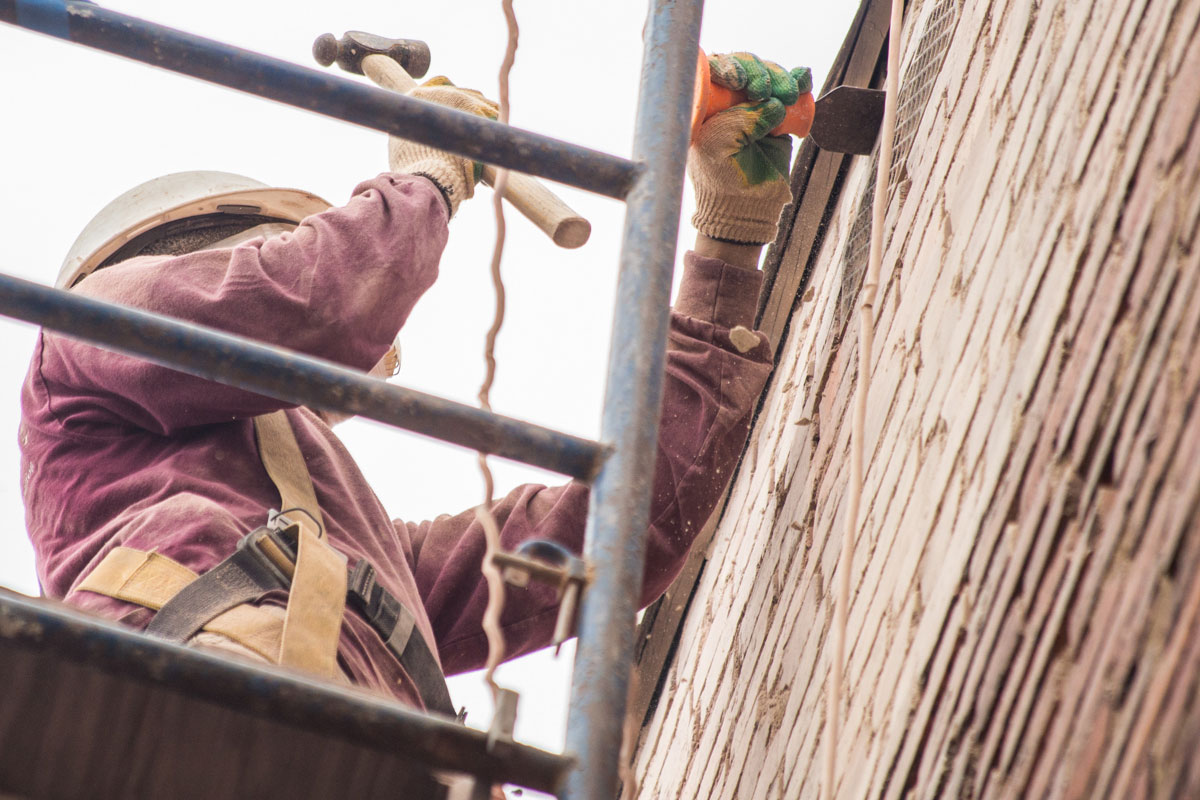Services
Tuckpointing is a complex process that requires much more than just replacing failing mortar. Renaissance Development’s expert team has the experience and skills required to give your building the careful attention it deserves.

TUCKPOINTING
Washington’s historic houses were constructed of clay bricks assembled with lime mortar. After decades of exposure, the mortar joints between the bricks begin to fail. Makeshift repairs are often made with cement, which is commonly used in new construction but inappropriate for historic buildings. We use specially formulated lime-based mortar—which is low in compressive strength and contains no cement—to tuckpoint [or re-point] brick facades.
WHAT TO EXPECT DURING A TUCKPOINTING PROJECT
Historic homes have seemingly endless to-do lists of repairs. While homeowners might be tempted to tackle the cracks in their house’s brick walls [either inside or out], such evidence of structural failure is a clear indication that expertise is required.
SIGNS OF TROUBLE
The failure or structural integrity of an aging brick wall is most obvious when visible gaps in the mortar joints appear. Equally problematic are so-called “spot repairs” with inappropriate materials such as Portland cement, silicone caulking, or even duct tape. These makeshift efforts at repair can even contribute to the more rapid deterioration of a brick wall’s structural integrity.
An on-site evaluation is the best way for a building professional to determine the best course of action. Although many contractors claim to be “brick experts,” not all of them are equally experienced with or sensitive to the particular challenges inherent in dealing with old buildings.
CONTRACTORS AND CONTRACTS
Good communication from the outset will be the basis for a successful project. No questions are too picky or particular. Breakdown in mortar joints can also be caused by other problems, such as clogged gutters, a failing roof, or leaky windows. Tuckpointing experts may recommend that certain kinds of drainage issues be addressed before starting repair and restoration work on a brick façade.
A written tuckpointing proposal should include the following:
• Scope of work – a detailed description of the existing conditions and work to be performed. This may include specifying which exterior walls is to be completed [e.g. north, south, alley side]; issues to be addressed and rectified; composition of the work crew; plan for erecting scaffolding; description of the techniques and materials to be used in the tuckpointing; and outline of site-work expectations
• Project cost
• Timeline, start, and completion dates
• Required permits
• Warranty
• Change orders
PERMITS
The permitting process in Washington, DC, and surrounding areas can be challenging. If your home is in a historic district, the requirements are rigorous. The process usually takes 2-4 weeks and may involve gaining approval from multiple agencies.
In certain circumstances, additional permissions may be required. These include but are not limited to:
• Public space permit for work performed adjacent to a public sidewalk or alley
• Neighbor permission forms from owners of immediately adjacent properties
• Special scaffolding permit if scaffolding is visible from the street
WHEN HOME SWEET HOME BECOMES A JOB SITE
Tuckpointing work is messy. Dust is inevitable, and the grinders used to remove failing mortar can be noisy. The best masonry contractors will make sure to complete the following tasks through project duration:
• Walls carefully washed by hand [with low pressure, not power-washed] before, during, and after mortar installation
• Daily site cleanup
• Placing all debris in heavy-duty/contractor bags and removed from the site on a regular basis
PROJECT COMPLETION
When your tuckpointing project is completed, your historic brick home should look refreshed. That includes restoring its curb appeal. Look for a final cleanup that includes window washing – yours and the neighbors – washing the exterior walls, and repairing your landscaping. Your final walk-through should reinforce your investment in maintaining the structural integrity and historic authenticity of your home.
Tuckpointing done the traditional way restores the classic beauty of brick and mortar and lasts for many years. It’s what preserves the allure of the classic brick homes in DC’s historic neighborhoods.
